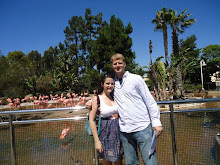
Turtle in Paradise is the story of a young girl's journey to find a way to fit in with the Conchs of the Great Depression in Key West. Turtle, as she is nicknamed, is sent to Key West when her mother gets a job housekeeping for a woman who does not like children. While in Key West, Turtle encounters cousins in the form of the Diaper Gang, a busy Aunt who manages a home full of boys without the help of their father, and a grandmother she never knew she had.
Turtle is a tough kid. She has been made that way by a slightly naive mother and a string of employer's kids who have treated her poorly. Turtle is a natural skeptic, but as another character points out to her, turtles have soft under bellies. By the end of the stay in Key West, Turtle has found that soft spot.
The characters and the plot of Turtle in Paradise are very entertaining. Of course, a pair of best friends named Pork Chop and Beans live up to your expectations as a reader. Also, botched quests for gold are fun too.
Set in the Great Depression in a place where food hangs from trees, Key West, readers can recognize some of the elements of the time period. For example, the father in the story is absent because he is working on a public works project, building the bridges to Key West. Also, the Curry family and most of the people in Key West are living in extreme poverty; Turtle's shoes are a rarity.
Turtle's narration and honesty are heart warming. This brings us closer to her and involves us more in the plot. We learn through the theme or central message of Turtle in Paradise and maybe the Great Depression, that our individual walls or protective barriers might work for a while, but only when we start giving and caring for others, we are protected.
Holm also teachers readers about a time period, the 1930s, and a culture, the Conch culture of Key West. Holm utilizes an "Author's Note" to provide more detail about some of her pop culture references and to explain the origins of some of her characters. For example, the character Kermit, one of Turtle's cousins in the story, was based on a character by the same name who later became mayor of Key West.
Turtle in Paradise would prove a great supplement to a study of the Great Depression. As students read or discuss this book, it would be important to ask them how their summers and free time differ from those of Turtle's and the Diaper Gang's. When students get to the root of the question, they will most likely discuss the lack of shoes or the types of foods the characters ate. Otherwise, I found the historical value of Turtle in Paradise to be slightly limited in comparison to other books I have read in this unit.
Turtle in Paradise was a Newbery Honor Book and won the the Golden Kite Award and was named to the American Library Association's Notable Books for Children list. School Library Journal says that "Readers who enjoy melodic, humorous tales of the past won't want to miss it." In a starred review from Booklist, Ilene Cooper says "The numerous references to 1930's entertainments (Terry and the Pirates, Shirley Temple) will most likely go over kids' heads, but they'll get how much comics and movies meant to a population desperate for smiles."
Other books by Jennifer Holm include The Babymouse Series with Matthew Holm, Boston Jane: An Adventure, Boston Jane: Wildness Days, Boston Jane: The Claim, The Creek, Middle School is Worse than Meatloaf, Our Only Amelia, Penny from Heaven, and The Stink Files Series with Jonathan Hamel. At the end of Turtle in Paradise, Holm also provides a brief list of resources and related websites.
References:
Holm, Jennifer, L. Turtle in Paradise. Random House Children's Books, New York: 2010. ISBN: 978-0-375-836886.




No comments:
Post a Comment